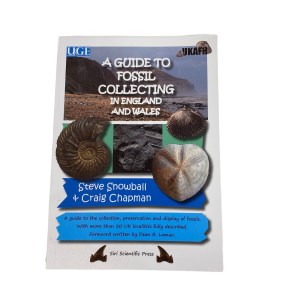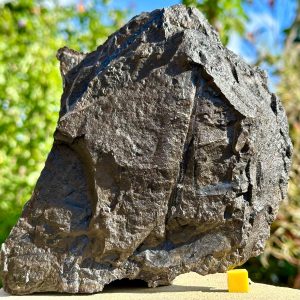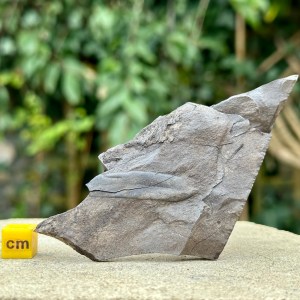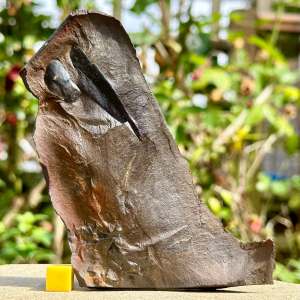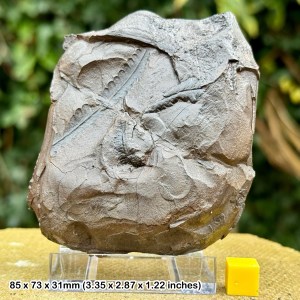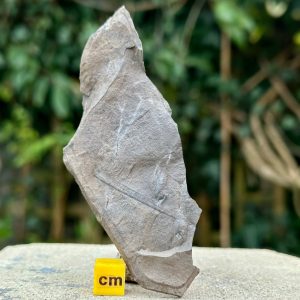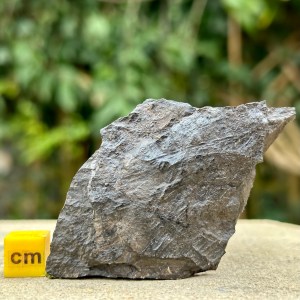Writhlington spoil heap was created by the Geologists’ Association to preserve fossiliferous spoil for future study and is open to the public for fossil collecting. It has yielded hundreds of plants and insects species and is well documented. There is plenty to be found and, occasionally, the spoil is turned over to allow for better collecting (but this has not happened for a while).
DIRECTIONS
♦ Travel along the Radstock to Frome road and then take Manor Road. It will eventually change into Church Road. Continue to follow this road down into the valley. It will merge into another road from the right. Take this road.
♦ At the lowest part of the valley, you will see a small opening with a gate. There is enough space for one car. If you come to a bridge, you have gone too far.
♦ At the opening, you will need to climb over the gate. You will see evidence of the old railway tracks. Eventually, you will come to a second gate at the bridge. You need to follow the footpath until you reach a ‘T’ junction which also climbs a 45-degree slope. Just before the start of this, a footpath veers left into some woods and into an opening. Follow this footpath through the opening and up the mound. You will then come to a large clearance containing the spoil.
♦ Ref: 51.29599°N, 2.42530°W
PROFILE INFO
FIND FREQUENCY: ♦♦♦♦ – The plants and insects at Writhlington are very well preserved and were plentiful. The only problem is that this site has been over collected, so you will have to dig for them, because the surface spoil has been picked over by many collectors over the years.
CHILDREN: ♦♦ – Because access to this location requires crossing a dangerous bridge, it is not suitable for families. It is also a long walk.
ACCESS: ♦♦ – Finding this location can be a real challenge and it is also difficult to get to due to a dangerous bridge crossing. It is tucked in the woods with several footpaths and you can easily take the wrong one. Parking is also quite tight, with only one space for a small car.
TYPE: – The mine from which the spoil came is now disused, but a lot of the area is covered in overgrown spoil heaps. Beneath the surface are plant remains waiting to be uncovered. It may look like just another old disused overgrown tip which once produced good specimens, but it still does produce a few good specimens providing you work for them.
FOSSIL HUNTING
There are well over a hundred different plant specimens to be collected at this site, some much more common than others. As well as plant remains, be sure to keep an eye open for insects such as dragonflies. Dragonfly wings can often be mistaken for plants, but looking at them under a field lens is the best way to ascertain what they are. There is also a very hard limestone layer, which, if it can be found, contains a range of freshwater shells, including brachiopods and bivalves. These are well preserved. Blocks of this can sometimes be found mixed in with the spoil heaps.
Search for fossils in the blocks of shale and also dig into the spoil. In addition, you can search the areas around the clearance, as these are more likely to yield fossils, as they are less likely to have been picked over.
GEOLOGY
The Carboniferous beds at Writhlington are from the Silesian (Upper Carboniferous) Upper Coal Measures Formation, which are from the Westphalian Stage, Asturian Substage.
These lie within the Radstock Member, where coal seams frequently occur at the lower end. For this reason, Radstock became a very popular location for coal mines in the Avon area. However, due to the inconsistencies of these seams and the fact that they were usually quite thin, the mines eventually shut down and coal extraction moved to other areas.
At this site, the top of the Radstock Member has been removed, together with the coal seams at the lower end. The fossiliferous beds are from the Farrington Member and Barren Red Formations, of the Grovesend Formation (Warwickshire Group), both of Asturian age, which contain the hard rocks at the base seen occasionally scattered around the spoil heap. Bands of red rock occur within the shale at the top of this formation, containing very poorly preserved and eroded plant fauna.


SAFETY
Common sense when collecting at all locations should be used. Ensure that you do not dig into the public footpath for the safety of others. Extreme care must be taken when crossing the bridge, as the stream is a long way down and the slope is quite deep. The fence on both sides has collapsed.
EQUIPMENT
You will need the right tools for Writhlington since this spoil heap is now overgrown. Providing you take some tools (spades, picks, geological hammers etc) to expose large lumps of shale, you should come away with some good specimens. Take plenty of paper to wrap your finds and something to put them in. Treat them as soon as possible.
ACCESS RIGHTS
This site is an SSSI. This means you can visit the site, but hammering the bedrock is not permitted. For full information about the reasons for the status of the site and restrictions please download the PDF from Natural England – SSSI Information – Writhlington
It is important to follow our ‘Code of Conduct’ when collecting fossils or visiting any site. Please also read our ‘Terms and Conditions‘
LINKS
♦ Buy Fossils, Crystals, Tools
♦ Location Discussions
♦ Deposits Magazine
♦ Join Fossil Hunts
♦ UK Fossils Network
-
A guide to fossil collecting in England and Wales
£24.20 -
British Fossil Fern Leaves, Plants, Carboniferous Coal Measures, Somerset
£36.00 -
British Fossil Fern Leaves, Plants, Carboniferous Coal Measures, Somerset
£24.00 -
British Fossil Fern Plants – Carboniferous Coal Measures, Somerset
£5.40 -
British fossil fern plants – carboniferous coal measures, somerset
£5.40 -
British fossil fern plants – carboniferous coal measures, somerset
£7.20 -
Carboniferous Period Fossil Fern Leaves Display with Stand – Radstock, UK – Authentic with COA
£18.00 -
Genuine Fossilised Fossil Plants and Stem Carboniferous Coal Measures Somerset
£5.40 -
Genuine Fossilised Fossil Plants and Stem Carboniferous Coal Measures Somerset
£5.40



























